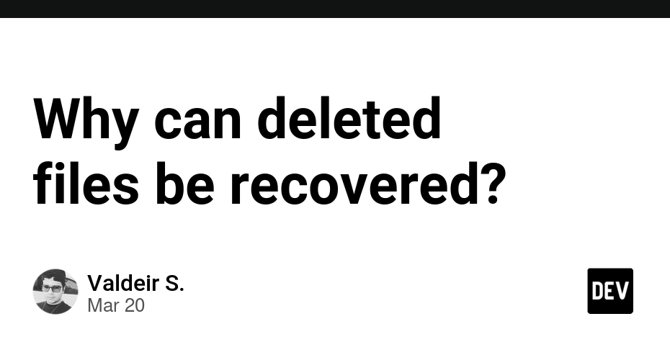Dev
1M
371

Image Credit: Dev
Why can deleted files be recovered?
- Solid State Drives (SSDs) consist of DRAM for caching, NAND Memory for storage, and a Controller for managing operations.
- DRAM is volatile memory used as a cache to speed up read/write operations in SSDs.
- The SSD controller manages data operations, including translating commands and wear leveling.
- NAND Memory organizes data in pages and blocks within memory cells.
- When files are deleted on SSDs, the space is marked as free but data remains until overwritten, allowing potential recovery.
- Forensic experts can recover deleted data from SSDs due to delayed data overwrite and FTL.
- The TRIM command helps erase unused data blocks on SSDs, making deleted file recovery harder.
- Encryption methods like software and hardware encryption help secure data on SSDs.
- File deletion may not guarantee permanent removal, and physical destruction is a secure data disposal method.
- Adopting comprehensive data protection practices is crucial, including encryption and secure destruction when necessary.
Read Full Article
22 Likes
For uninterrupted reading, download the app